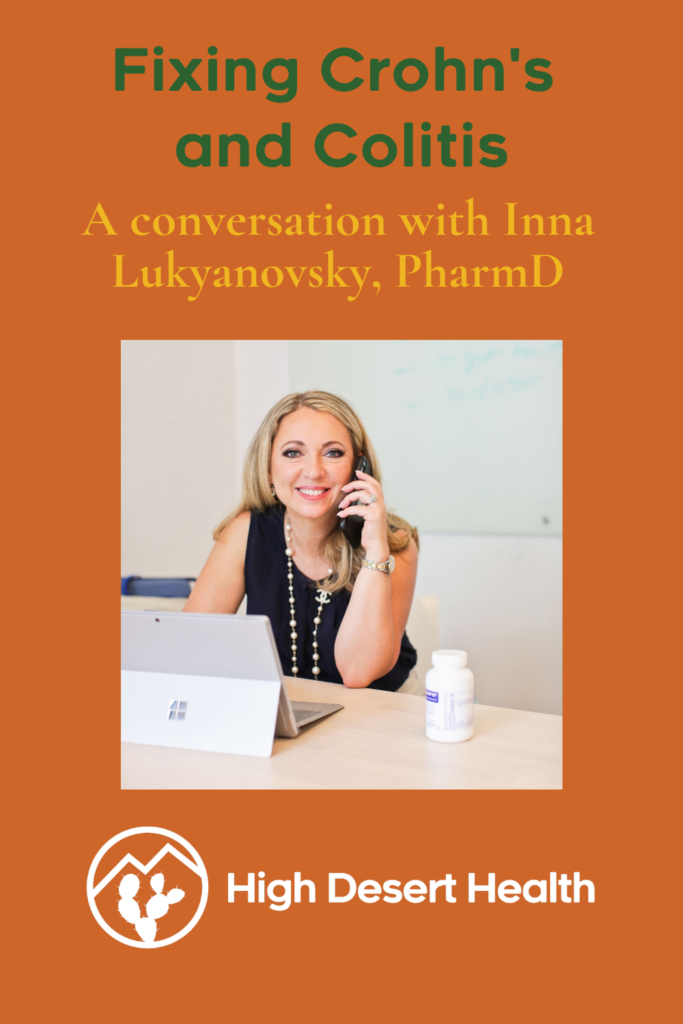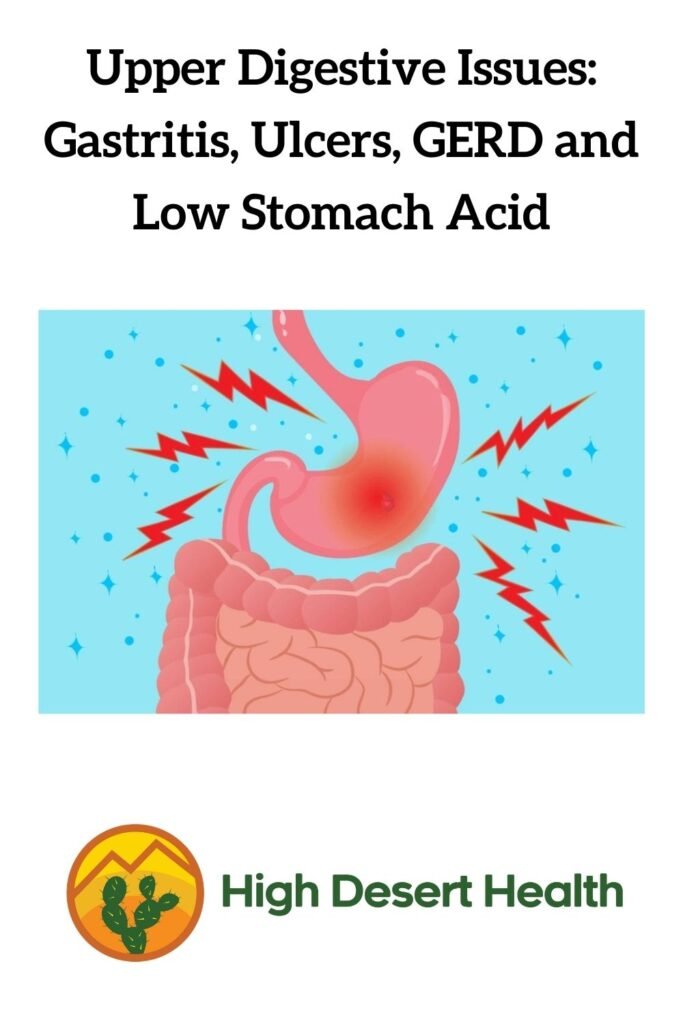
Adapted from Episode 43 of The Perfect Stool: Understanding and Healing the Gut Microbiome with Dr. Diane Mueller.
Lindsey: Welcome to The Perfect Stool: Understanding and Healing the Gut Microbiome. This is your host, Lindsey Parsons, and today I’m going to be talking with Dr. Diane Mueller, a naturopathic doctor, doctor of acupuncture, and a survivor of IBS, Lyme disease and mold illness. Dr. Mueller is passionate about bringing research, understanding and compassion to those with these diseases. She has co-authored a book, which is to be released in May 2021, called Use Your Mind to Heal Your Mold and Lyme. Her practice, the Medicine with Heart Clinic, treats patients around the country. She also co-owns an online functional medicine school called the Medicine with Heart Institute, where she trains clinicians around the world in functional medicine.
Lindsey: It seems like a lot of these always start with this long illness history from their guests. And I don’t want to spend too much time talking about that, but it’s 2021 now, and I’m curious what years you were dealing with IBS, Lyme, and mold illness. Was that all at the same time, or one at a time?
Dr. Mueller: The IBS actually started in childhood, back in the 80s, and then I started having symptoms in the late 90s, early 2000s. That later led to me realizing those symptoms were connected to Lyme and mold, but they kind of worsened throughout 2000 to 2010. And it was 2011 when I actually realized what was going on from that standpoint.
Lindsey: Is having gone through that what interested you in becoming a naturopathic doctor?
Dr. Mueller: I had gone through all the classic things with IBS, as so many other people do, around conventional tests that said everything was normal. That’s what drove me into learning naturopathic medicine and acupuncture. When I was in medical school, the IBS and the stress of of medical school that started making some of the symptoms of Lyme and mold, really start exacerbating. That’s when I really started going downhill. That’s sort of ironic, right? You’re learning how to treat these things as well. You’re simultaneously coming to them. Yeah, I mean, it’s, in some ways, I guess, a good way to learn. I’m a kinesthetic learner. So maybe that’s why this happened to me is so I could learn.
Lindsey: You said IBS came first. But do you think of that as your root cause?
Dr. Mueller: For me? One of the big things was small intestinal bacterial overgrowth, for sure. And I think the onset of that was when I was young, we took a family vacation, and I was at a restaurant and had drank some really soured milk. I had really insane food poisoning that took me down for almost a whole week after. And you know that food poisoning is so often that instigator through the CdtB toxin released that I think that’s what caused my migrating motor complex to shut down and the progression of SIBO from there.
Lindsey: Have you ever done the ibssmart test?
Dr. Mueller: I have done the one that is offered by Vibrant Wellness.
Lindsey: Okay, yeah. Does it does it test the Anti-CdtB (Cytolethal Distending Toxin B) antibodies?
Dr. Mueller: It does.
Lindsey: Anti-vinculin?
Dr. Mueller: Correct. Exactly. It’s basically the same test. It’s just different company.
Lindsey: And so yours were positive.
Dr. Mueller: Mine were positive.
Lindsey: Got it. So now for the Lyme and the mold, I assume you got those sort of along the way, but the stress was what made you more susceptible to them?
Dr. Mueller: I did grow up in the Northern Virginia area. We used to camp a lot in the Appalachians and my sister had Lyme disease when she was young. She had the classic bull’s eye rash. When she got sick was people were actually realizing that Lyme disease was a real thing. I know I was definitely in some very, heavy Lyme areas. My suspicion is I could have caught it back then. For so many people like it can look like the flu and it goes dormant. My suspicion is that medical school and stress made it really come out of dormancy. One of the things I was having prior to that was waking up and having these days that were really, really off. I couldn’t think and everything would get cloudy. I started having some joint swelling to the point where I actually had to have elbow surgery to work on some of the swelling. Those were some of the early symptoms that started coming on. Then when I got into school, the stress of that, living in a moldy environment, everything converged. I still had SIBO at that point so it was just a perfect storm.
Lindsey: So let’s talk about how the classic Lyme, Borrelia burgdorferi, how that might manifest in the gut.
Dr. Mueller: What has been shown in research is that on those positive with Lyme, the cardiac vagal tone, which is a way of monitoring the impulse of the vagal tone on respiration, but the test is really telling us about the vagal nerve functioning in general, this study found that those with Lyme had a vagal nerve that was actually downregulated, which means turned down, and was not functioning as well. The vagal nerve runs so much of digestion: anything from peristalsis, the movement of food through the intestinal tract, and proper stomach acid secretion, proper bile secretion, proper pancreatic enzyme secretion, to name a few. When Lyme starts to attack the vagal nerve, we can actually see a problem because none of these digestive functions are getting the proper signal.
Lindsey: Do the Lyme co-infections manifest the same way in the gut, impacting the vagus nerve?
Dr. Mueller: It’s a slightly different mechanism, but with the same potential impacts. Bartonella, for example, that co-infection, the mechanism that is thought to be happening is an increase in our white blood cell, the CD34+. When that is upregulated, what happens is that we’ll see a catecholamine dominance. We see norepinephrine and epinephrine (adrenaline) essentially increase. When those things increase, we move into more of that fight or flight type of situation. It’s really the same thing that could happen through turning down the vagal nerve, but it’s through this backdoor mechanism of increasing the fight or flight due to the way our white blood cells are responding.
Lindsey: How many different Lyme co-infections are there?
Dr. Mueller: We’re still learning so much about all these different microorganisms that insects are containing. When people get bitten by an insect, whatever cocktail that insect has of microorganisms gets inserted in somebody’s body. It’s unspecific. I think that I can answer that in the most common ones that we see in clinical practice. These ticks and insects are always picking up new things. I think there’s always going to be a new microorganism on the on the scene that we haven’t seen before.
Lindsey: What are the most common ones, then?
Dr. Mueller: The most common ones are be Bartonella, Babesia, Ehrlichia, Anaplasma, Rocky Mountain Spotted Fever. There are others like Dengue fever that can also be a concern, but the top ones for sure are going to be those.
Lindsey: If you go to your doctor to get tested for Lyme, how likely is it that they’re going to test you for those other things? And is their test even worthwhile? Or do you need to go to see a naturopath or functional medicine doctor to order a good quality test?
Dr. Mueller: I’m so glad you’re asking this. The challenge with how these things are being tested for in conventional medicine is typically they are first screened for in conventional medicine with an ELISA test, which has been shown to have a high rate of false negatives. The western blot is a different testing mechanism, which has been shown to be much more accurate for diagnosing Lyme than the ELISA. But yet that’s what people start with. And they only get the western blot if the ELISA is positive.
Lindsey: Is this because insurance companies won’t pay for the western blots? Are they more expensive?
Dr. Mueller: Exactly. That’s the challenging thing with going to a conventional doctor. So many people, even if they request this and hear this information, go get tested, and then they hit this roadblock, and they think they’re fine when they’re not because of a bad test. It’s definitely important to go to somebody that’s Lyme literate, that really knows Lyme, to get a test from them. And Western blots, definitely a decent test. But there are also problems with it. The western blot essentially takes little tiny protein pieces of the Lyme bacteria, and seeing if there’s an antibody response, or looking to see if our immune system is reacting to certain proteins, which are seen in the Lyme bacteria. And the problem with this is how this test is interpreted. Your immune system has to react in three to five different ways to these particular protein pieces. And why that is oftentimes an inaccurate way of interpreting things is because some of these protein pieces are so specific to Lyme, that there’s really not going to be other microorganisms that would actually cause our immune system to react in this way. Why do we have to have three to five different ways of reacting when you know this test is super specific to Lyme? One of these elevations should be a sign that there is Lyme present. So I know that’s kind of heady information. But the point of that is, even with the Western blot test, it’s really important to go to a Lyme doc that understands how to extrapolate and understand the material so that it’s truly being interpreted correctly, because it can be interpreted incorrectly quite a bit.
Lindsey: It sounds like you could even look at your own Lyme test from a traditional doctor, if it were a Western blot, and see if you get one positive, I should probably consider myself as having Lyme and see somebody who can help me with this, since my doctor probably will tell me I’m negative.
Dr. Mueller: Exactly. And there are some of those protein pieces that are very nonspecific, meaning there’s some protein components of Lyme that other viruses have as well. So those things that are nonspecific we ignore if it’s just one, and we try to understand the whole picture. But the protein pieces that are really specific to Lyme, it’s super important to interpret correctly. Then the PCR test is really looking for the DNA of the bacteria. That’s also a super useful test to do in combination with the Western blot just as a check and balance.
Lindsey: Is this a stool test? Or what kind of PCR?
Dr. Mueller: This is a blood test. I’m sure your readers are really used to seeing PCR stool tests. It’s a similar mechanism of looking for the DNA and microorganisms, but instead of looking for them in the stool, we’re looking for them in the blood, because that’s going to be a more likely place where we’re going to find the DNA for Lyme.
Lindsey: I’m not actually sure how much my readers know about PCR tests, but I mentioned the GI Map, and that’s a PCR test where you’re matching the DNA to the organisms you’re looking for?
Dr. Mueller: Yeah, that’s a simple way of explaining it. I love it. That’s a great test. We use that test too.
Lindsey: What about the co-infections for Lyme, if you see your doctor can they test for the coinfections?
Dr. Mueller: They are probably going to think that you are reading too much online if you ask for the co-infections. Every once in a while I do find a conventional doc who’s really educated in this. But most of the time, one of the biggest problems that I find around insurance not covering is doctors not wanting to order things they don’t cover. One of the things that I’ve seen come up quite a bit when talking to conventional docs is that people don’t like to order things that they don’t know how to interpret and treat. So oftentimes, a no can even be coming from a place of, well, if the doctor orders it and doesn’t know how to treat it, then they’re assuming in some way, some level of responsibility, and they don’t know what to do from there. It’s almost like there’s some resistance to even going down that road.
Lindsey: So maybe you could just say, hey, my functional doctor wants me to get these tests done, they’ll handle it when they get the results, and they might have a better chance with a naturopath.
Dr. Mueller: Yeah, absolutely. I still see people get shut down. But having that approach of letting them know that they’re not responsible for this information. I have a plan. Can you just help me? And some definitely will. It’s definitely from a testing perspective. I would ask for whatever the microorganism is. If we’re saying Bartonella, Babesia, or any of these others I mentioned, then they would typically want to ask for both and IgM and IgG antibodies as well as the PCR. It’s essentially three different markers for any of these microorganisms (co-infections) that you would be wanting.
Lindsey: If you find somebody who’s got simultaneously the gut issues, mold and Lyme, which do you deal with first?
Dr. Mueller: It’s definitely dependent but one of the things that’s super important to realize is oftentimes starting with the gut can move us further faster. One of the things that’s really interesting is that E. coli, one of the microorganisms that in some cases is overgrown in SIBO and is also seen with chronic UTIs, E. coli will actually change a protein in the liver, it’s a transport protein, and that protein’s job is to help move toxins out of the liver so our body can excrete them in the stool. The endotoxins from E. coli will block that transport protein. What that means in somebody that has a SIBO overgrowth along with Lyme and mold is actually a prevention of the Lyme and mold toxins from moving out of the body. So if there’s SIBO, that is a case where it is often better to start with the gut. One of the exceptions, though is if somebody is in a moldy home, the mold tends to cause so many problems, that if people have the ability to prioritize getting into a safe space, in that situation, I usually say that’s the most top priority, but we definitely have to get the gut working as fast as possible.
Lindsey: How do you end up treating Lyme and its co-infections?
Dr. Mueller: In our practice, we use predominantly herbal medicine. A lot of people are really into treating Lyme with doxycycline, and a triple antibiotic therapy. There’s so many problems with that as you and I know about the gut, and really the microbiome of the whole body. And what’s also interesting is doxycycline is the main drug on the scene for treating Lyme. It has actually been shown that doxycycline will actually cause Lyme to convert from its most active form to its dormant state. The challenge with that is people take the doxycycline, and they can feel a little bit better because they’re getting the Lyme out of their blood and out of the system, but they’re just moving it into hiding, so they’re not actually clearing it. Then when somebody’s stressed, the Lyme will essentially come out of hiding. I really don’t like to use doxycycline and the triple antibiotic therapy is so intense. I’ve seen people come into my clinic that have been on IV triple antibiotics, sometimes even up to five years, and these are the sickest people I’ve ever seen. I’m sure it’s no surprise to your readers after the work that you do on teaching them about the gut and the health of the gut in the microbiome, because it really just destroys us. And with all we know about the gut and the microbiome, and its effect on our immune system, destroying that is not going to help us eradicate these infections. I find herbal medicine to be a much safer approach, and incredibly effective. It works so well.
Lindsey: Are there particular herbs that are good for Lyme, or particular nutraceuticals?
Dr. Mueller: There’s definitely particular herbs, and some of it is also about the way the herbs are prescribed. One of the things we really want to be careful with, whether it’s herbs or pharmaceuticals, is preventing the Lyme from burrowing deep into our tissues, or from changing from its active form into one of its hiding forms. There’s a couple of different ways we can do that. One is through pulsation, which means that we are going through a period where we are on the herbs and then off the herbs. We might say take an herbal protocol for five days, then take two days off. During those two days, we might be doing some gut work or some adrenal work, something that’s strengthening the body. We rotate that way. The other way to really prevent the Lyme from going deeper is by rotating through our therapies. When we rotate, we might do an herbal protocol for say, a month, and then switch to another herbal protocol for a month, switch to a third and then rotate that way.
Lindsey: Always on that five:two pattern?
Dr. Mueller: It doesn’t seem to need the five:two pattern unless you’re just sticking with the same protocol.
Lindsey: Which herbs are good for Lyme?
Dr. Mueller: One of the most important ones that we feel at this point is an herb called cryptolepis. Cryptolepis is really amazing. It kills Lyme in all of its different states. There’s one particular dormant state called a persister state. And what’s interesting is this is a state of Lyme that just does not respond to antibiotics. It’s not antibiotic resistant, because antibiotic resistant bacteria have actually changed their DNA to become resistant. That’s thought to be caused by a genetic mutation in Lyme that spontaneously makes the Lyme resistant without having a gene. The idea with cryptolepis is that it has been shown to kill those types of cells in laboratory studies. They’ll do these studies where they’re putting these different antimicrobial agents against Borrelia. And it will look like Borrelia is dead and then they’ll check the petri dish a week or two later, and all of a sudden, all these new cells have sprung up. So cryptolepis has been the herb that’s performed well for up to 21 days. At the 21 day mark there’s no Borrelia. That’s been the only thing that’s performed that well from an herbal or from a pharmaceutical standpoint. And crypto has outperformed all of the herbs and all of the pharmaceuticals.
Lindsey: What are the symptoms that somebody might have Lyme or Lyme co-infection?
Dr. Mueller: One of the most common things we see is migrating pain, so pain that can be in the hip and then the shoulder and then the elbow. So usually somebody is in pain most of the time, but it moves in location and severity. That’s one of the most common things. But Chronic Fatigue is really common, gut problems are really common. From a gut perspective, I would really be thinking about Lyme based on the GI map, if they’ve done the SIBO test and they came back negative, and they’re hydrogen negative and their GI map looks good and their microbiome is healthy, and all the basic things have been done. So now we should start looking at what else could be attacking the vagal nerve and could be causing some of this inflammatory process. Other symptoms to look out for are things like agitation, anxiety, quick to overwhelm, and being quick to anger. Sometimes people will wake up and panic, or wake up in anxiety. Waking up in the middle of the night is a very, very textbook symptom of Borrelia. The other thing to really think about and when to consider Lyme is when the gut has been looked at, the adrenals have been looked at, maybe metals have been looked at, when there’s been a lot of other things that have been looked at. What else is causing such a widespread symptom picture where somebody is not getting better, then we definitely want to be thinking about borrelia.
Lindsey: In terms of the moving pain, is that typically moving between joints? Or could it be in your digestive system, too?
Dr. Mueller: It could be anywhere, honestly. The most classic thing is for sure pain between joints, but it can definitely be in the muscles, there can be fibromyalgia-like pain. It can be in the gut. If pain’s involved, we do want to have Lyme in the back of our mind as a possibility. Including pain anywhere, headaches, anything like that.
Lindsey: How long typically are these herbal protocols for Lyme?
Dr. Mueller: The average person is on herbs for Lyme for a year. As far as total treatment, it really just depends upon when we do functional medicine lab tests, how many different things we find come up on the labs.
Lindsey: Assuming that you’ve already worked on the gut and the Lyme, and a year goes by, they can get off the medication. Do people tend to then not have the gut issues re-appear?
Dr. Mueller: I do see that some people still have to be on certain diets. One of the things I have found is that for people that have chronic SIBO, for example, where it seems like it’s gone, you do migrating motor complex work for six months, they’re great, and then you know, a year or two later, I just find that some people have a tendency for it still to recur. There are certain people that I have found that if we can just keep them on certain diets that can really be helpful. But I’ve absolutely seen this really change the picture for people with GI issues in a permanent way.
Lindsey: What do you like for the migrating motor complex?
Dr. Mueller: For the migrating motor complex, we’re using 5- HTP, ginger, low dose naltrexone. I really do like the low dose naltrexone quite a bit. I’ve seen some really positive things with it, then a little bit of low dose erythromycin, but haven’t used that one quite as much.
Lindsey: So that one kind of scares me because it’s an antibiotic.
Dr. Mueller: Exactly. Even in low dose, it definitely scares me too.
Lindsey: We’ve talked a lot about Lyme. Let’s move on to mold. I have a client right now who has very serious mold illness, and I’m eager to hear more about it and how it interacts with the digestive system. So first, let me just ask, is mold usually environmental, like you’re in a moldy house or workplace or is it sometimes coming from food or other sources?
Dr. Mueller: Well, it certainly can come from food and other sources. But mold illness is really an issue where we have a genetic anomaly where our body is not able to properly recognize the toxin from mold. And because we can’t recognize the toxin because of our immune genetic issue, we can’t eliminate it. So yes, it comes from buildings, we can have it from food, but I’ve never seen somebody where eating some peanuts is the reason they have mold illness. Somebody with mold illness should certainly avoid peanuts, but it’s more that the mold toxin level is so high that our body can’t eliminate it.
Lindsey: What portion of the population has that genetic anomaly?
Dr. Mueller: 24%, but the thing with that is, not everybody has their gene activated. So just because there’s 24% that have it, of course, the gene has to be activated. So not all 24% are in this situation where they could react this way, because some of them will not have an activated gene. So typically, what activates genes is usually what we call it the environmental trigger in research. Usually, it’s going to be things like viruses, which have been studied quite a bit for activating genes, or toxins, pollutants in the air, stress, mindset. If we’re creating an internal stress response because of our internal dialogue, that could be enough to activate infections in the gut, poor dietary choices, any of these types of things can potentially activate the gene.
Lindsey: Okay, once it’s activated, can you deactivate it?
Dr. Mueller: It’s a big question and research right now is really to see a couple different things. The way it’s been described to me, and the way I can best help people understand this if you can imagine that our genetic code was your arm, and then there’s a sleeve, so your arm is covered. There’s certain things that are going to pull up the sleeve, essentially allowing the gene to express. One of the things that we have seen to pull down the sleeve and cover up the gene are methyl donors. By giving things like Sam-e or choline or creatine, these things that have been shown to help with methylation, that’s something that can help potentially with lowering that epigenetic expression. This is still a little bit theoretical and research is still finding how much is this truly able to be turned off.The other thing that is showing promise right now is meditation. So those are the two things that I’ve seen that are showing the most promise, although we still need more studies to really say conclusively what’s happening.
Lindsey: Okay. So I found it interesting that you mentioned choline, Sam-e, and creatine as methyl donors?
Dr. Mueller: Well, Sam-e is a methyl donor. And then choline and creatine will basically help take their methyl donor, so they’ll help prevent methylation from being used to create them. Then methyl donors can be more available for something else, especially creatine, it takes a lot of methyl donors to make creatine. So then if we give creatine, we don’t have to use those methyl donors for that, so then we can use the methyl donor someplace else.
Lindsey: When I think about methylation, I always think about methyl folate and methylcobalamin (B12).
Dr. Mueller: You know what’s so interesting about that is there’s a really cool study that looks at methylcholine, or methylcobalamin, and methylfolate. What that study showed is that even though there is a methyl group attached to those things from how many methyl donors those types of molecules can do compared to say, like a Sam-e, or compared to a creatine, it is so much less, even though we do know of course, people with MTHFR problems, if we give them too much methylfolate, or too much methylcobalamin, the right amount is good, the wrong amount is a problem. Even though there is something happening there, the amount of donation from a methylation perspective of those nutrients is so much less than these things I mentioned. And that study was really exciting to me to find, because it’s definitely not what I think a lot of us were thinking about methylfolate and methylcobalamin for some time.
Lindsey: How does mold impact the digestive system?
Dr. Mueller: One of the things that mold has a tendency to do from a symptomatic perspective, is a lot of people feel very, very nauseated. There’s a lot of that and we do know that mold can cause a lot of neuro inflammation. We do see that mold for a lot of people can also cause sympathetic dominance. From that standpoint, again, bringing us back to the need for parasympathetic control. One of the things that I know we had talked about briefly prior to this was the idea of mast cell activation and histamine intolerance. Many people with mold will wind up having histamine intolerance, because mold will create a lot of histamine in the body. We actually see that it can actually cause intestinal permeability. When we’re talking about leaky gut, even leading to autoimmunity, and the inflammation seen with intestinal permeability, that can be connected to histamine and that can be connected to mold.
Lindsey: I’m sure people are familiar with antihistamines, so they probably know what histamine is. Can you explain a little bit about how that looks in practice?
Dr. Mueller: Histamine is the molecule that gets released when we encounter something that is a bothersome to our body. Classically, allergy symptoms come from histamine, which is why anti-histamines work. With histamine intolerance, we’re seeing what happens when we encounter histamine in our environment, or food, and a lot of foods have histamine. What classically happens there is our body releases a couple enzymes, one that comes from the gut and one that comes from the liver, and those enzymes go up, and the enzymes will break down histamine. And if the enzyme levels are high enough, then the histamine goes away. We don’t even realize this is happening, we don’t have symptoms. Histamine intolerance is when the imbalance happens between the amount of histamine coming in and the amount of histamine going out, either due to too high of a histamine load, or due to a low of the amount of enzymes that are actually designed to break down that histamine. That imbalance is where this histamine intolerance can come into play, and that can manifest in symptoms like the runny nose, the itchy eyes, but it can also manifest in skin rashes, in intestinal permeability, in headaches, migraines, and fatigue. So many things that are not classic allergy related, that oftentimes without testing, we don’t even realize what’s going on.
Lindsey: 37:19
With these reactions, if they were related to too much histamine in food, or our inability to break down that histamine, would they happen right after we eat a food with high histamine?
Dr. Mueller:
They can, but usually, if it’s just from a food that’s high in histamine, unless we’re gorging on that food for many days, that enzyme should be high enough to break down histamine in food. If it’s truly just from food, then one of two things is happening, either there’s such a strong reaction to the food that the histamine level is super high and over the top, or if it’s a more mild reaction, that’s usually due to a deficiency in those enzymes, and the underlying problem of those two enzymes not being high enough to break down the histamine that’s in food,
Lindsey: Is that what mold does?
Dr. Mueller: People can have a histamine type of reaction to mold. That’s one possibility. There’s a lot of things that happen with mold illness. People have headaches and migraines and all sorts of different symptoms. One of many ways that mold can affect the body is that people can have a histamine reaction to it. And that histamine reaction can then cause that process that I just described. But I want to make sure I’m being very clear that this is only one of many different ways that mold can affect the body. It’s just how it’s related to the digestive system.
Lindsey: I’m interested because I do have this client in particular, who’s having a combo of symptoms where she’s got the mold and all of the accompanying symptoms, and then is also dealing with histamine intolerance and inability to eat the vast majority of foods. There’s no question it’s mold. That’s at the base of it all. So I guess there’s a good question. If the person cannot get out of the mold right now, is it still worth going and starting to treat it?
Dr. Mueller: I have tried that so many times, because I want that to work. And I have been pretty underwhelmed with the result. Every colleague that I’ve talked to that treats mold has had clinical results where it does not make a huge difference. Sometimes I’ve seen very small changes, but unfortunately, getting out of that place seems to be essential.
Lindsey: Say you’re able to go out of the place but the residual mold in your system is still debilitating, and your digestive system essentially feels dysfunctional. It feels like you’re not absorbing your nutrients, and like both systems are shot, where do you start?
Dr. Mueller: I do like to start people, as soon as we get them out of the moldy place, on the nutrients, even if we’re not ready for a full detox. So oftentimes, if the digestive system is shot, and there’s a problem there, it is valuable to really go after that as one of our top priorities. And in a mold situation, say we had H. pylori show up, and let’s say we have Blastocystis hominis, come up on the GI map. In that situation, we would definitely want to prioritize doing those. But in a mold situation, I would absolutely get started on opening up some of the detox pathways and binding the mold. One of the nutrients that I’ve seen to be just phenomenal for working with mold illness is choline, and I put people on a fairly high dose of choline, usually four grams, two to three times a day, and then start people on binders to actually grab onto the toxin and get rid of them. If somebody has a tendency with a GI issue for chronic constipation, I will tend to still put them on binders because it can help their overarching symptoms. Then I usually do something like a mag citrate, or sometimes even I use da huang, a Chinese herb, which is essentially a rhubarb extract, that is a bowel mover. I will use something if they’re constipated, I will still give them a binder to get the mold out. I will still temporarily put them on some sort of bowel mover to make sure that we are not trying to get things out and basically have our plumbing gunked up.
Lindsey: And do you do binders between meals the way you would like with a gut protocol?
Dr. Mueller: Correct.
Lindsey: Are the binders specific to the kinds of mold that the people have? Or are there some good general binders?
Dr. Mueller: I usually put people on a pretty broad binder spectrum because people do tend to have quite a few molds and there’s enough other environmental toxins and metals and all sorts of different things that people tend to have in their body. I usually just like to put them on a broad spectrum thing. It can be a combination of things. Chlorella works really, really well, it’s an amazing mold binder. It can be contaminated with metals if you don’t get it from a quality source. There’s a brand that I have vetted that we use, it’s called Prime, no financial interest in them. This is just purely a good company. They have a really, really great chlorella that we use. However, if you start giving people too many binders and they’re detoxing too fast, then you have to pull back on the binders and give less. With chlorella, the opposite is true. If people are feeling bad, they’re kind of hurting, they’re detoxing too quickly. The way to get them off of that usually is to give more chlorella. That’s a really interesting thing about chlorella. So we’ll do things like that. We’ll use zeolite, frequently fulvic, and humic acid. So those are some of the common ones we use.
Lindsey: What about GI Detox?
Dr. Mueller: Yeah, I’ve used that product in the past. Not one we’re using now. But that just purely from a not wanting to put people on too many things. But the thing about GI Detox is it does have a really nice blend of a lot of these things in it.
Lindsey: Right, right. Do you recommend certain diet changes then for mold patients?
Dr. Mueller: It’s not so specific to mold that I recommend diet changes, it’s more in combination with other things they have going on. If somebody has a lot of blood sugar issues, I might put them on a keto diet, or if they have a lot of cognitive dysfunction. I might put them on keto. Almost everybody comes off gluten for me, because I feel like for 99% of the population, it’s probably not the best thing. Then it really is going to be more dependent upon if they have SIBO, or if they have various different infections, like GI infections, we would change things. It’s more dependent upon the whole picture. There’s not a mold specific diet we use.
Lindsey: If a person with mold has been avoiding most foods, at what point can they feel safe to begin to expand their diet?
Dr. Mueller: Definitely doing it in a slow way, but I would say as soon as their symptoms start improving. Once they get to about 30% better from their symptom picture, and we use the Medical Symptoms Questionnaire. It’s subjective. So we rate our symptoms, but it’s still a way of seeing if somebody was reporting a 10, and now reporting a four, that’s a pretty major difference. So when somebody is 30%, better, that’s a great time to try it. We’ll try it as people are just really starting to feel the social impacts of not eating normally, and it’s starting to become this burden. And if we’ve done enough progress where we feel like it’s safe to try, we might try it earlier, just based upon the effects that being on a really limited diet can create.
Lindsey: Is there anything that I should have asked about all this that I have failed to ask?
Dr. Mueller: The biggest thing that I would say that is super important for people to understand is when we have multiple symptoms, even if it’s just one major organ system in the body, most of the time, there’s not only one root cause. I think that’s one of the biggest things that I feel like people can get stuck on, asking what is the reason, and most of the time clinically, I find it’s many different reasons. From a gut perspective, I would really emphasize for people that having an IBS diagnosis, having an IBD diagnosis, whatever it is, is really in some ways just the beginning. Now we know that there’s a problem, and now we have to figure out why. If somebody is not getting better from doing low histamine foods, working on their histamine load and healing, intestinal permeability, and taking care of microorganisms and all these different things, it doesn’t mean that those treatments haven’t worked. It just means that that is oftentimes only one piece of the puzzle. And we need to continue to ask why and continue to look deeper. If you’re somebody reading this, and you’ve been trying some really great basics, and you’re frustrated, because you’re not getting well, it just means there’s more to the story, and it’s time to continue to dig. Mold and Lyme are both great places to dig.
Lindsey: For gut issues, in particular, like that recurrent SIBO, that keeps coming back. That’d be a big one for looking deeper?
Dr. Mueller: Absolutely. That and I’d say more of a peristalsis slowing issue. The other big one, even if it’s not SIBO, is if somebody just has a tendency to be chronically constipated for an unknown reason, I would have that in my brain too.
Lindsey: Do you like to use probiotics simultaneously with the herbal treatments?
Dr. Mueller: Yes. We use Therbiotic Complete by Klaire Labs, that one’s really great. Another particular strain that has been pretty exciting is Lactobacillus, reuteri. Some of the studies that we’ve seen on that around H. pylori in particular have been really, really impressive. We use a lot of Therbiotic Complete, and we do use a little bit of spore-based products like Bacillus subtilis. For some people we use Saccharomyces boulardii as a probiotic, especially in cases where people have CF toxins. Blastocystis hominis is another big one, when we would use that particular probiotic or that particular microorganism as well.
Lindsey: Deciding between those different ones, are you looking at the GI Map and seeing what’s high, what’s low?
Dr. Mueller: We don’t tend to, just because even on the GI map, a pretty good microbiome profile, we’re still learning about all of the different microorganisms that are out there and what they do and what’s important. So we are looking at the GI map to see abnormalities, but the way we feel is that we just want to make sure that we are getting different species in there. If we’re really trying to reset the microbiome, that’s where we’ve really seen things like the elemental diet that is so useful for SIBO also being useful for those people where the microbiome is high in some areas and low in some areas, like on the GI Map. We’ve actually had better results by putting people on like a short term fast or an elemental diet to reset the microbiome more so than even a probiotic. As much as I still think probiotics are super important and super helpful, and in no way am I dismissing them, we’ve just seen that those things have worked really, really well.
Lindsey: So for a shorter fast, how long is that?
Dr. Mueller: There’s actually a fasting mimicking diet. So you might have heard of Prolon. That type of diet we did clinically as we made our own version of it, calculating carbs and proteins and fats and a macronutrient profile that the research on the fasting mimicking diet found. Then we did that from a food perspective. So that’s what we’ll put people on, but using the same macronutrient profiles, as well as the calorie profiles. That’s been a really great way of helping people get the same benefits from fasting and get through a fast, by maintaining blood sugar, of course, and helping people that don’t fast well,
Lindsey: How many calories is that in a day?
Dr. Mueller: It’s dependent upon body weight and all of that. I have to go back and look at my exact sheets, but it’s a descending thing. I think the first day for most people is around 700, and then it goes to maybe 400 or 500. It’s fairly low. But there is still some level of nutrition that goes in there.
Lindsey: How many days does it go on for?
Dr. Mueller: Typically five.
Lindsey: That’s workable. I’m just thinking in my head, could I do this?
Dr. Mueller: It’s definitely not the easiest, or the funnest thing for some of us. I’m not somebody that fasts super easily or well, even though I will do it because of the health benefits. But I’ve seen people go on it that feel so good. Some people just fast really well.
Lindsey: My brother in law did 39 days. It’s insane. By the time it was over he was so weak. He likes to fast for some reason. I guess it’s easier than dieting. Personally, I’ve never made it past two and a half days. I did a bone broth fast for three days hoping it might impact my sciatica, which it did not.
Dr. Mueller: It’s worth trying.
Lindsey: Does that count as a fasting mimicking diet? Bone broth?
Dr. Mueller: I would think so, I’ve never compared the macro ratio. But the potential of that seems very high to me.
Lindsey: Thank you so much for all this interesting information, where can people find you?
Dr. Mueller: People can find me at my clinic Medicine With Heart. I wanted to also share that my book about Lyme and mold and some of the things that we talked about in here, is for the first two days that it goes on sale, I’m going to give away the ebook for free. You can go to https://mwh.thrivecart.com/book/. And that website will ask for your email, and it will send an email when the book is going to be given away for free. Right now it’s looking like it’s going to be on May 24, but that could change a little bit as we move closer.
Lindsey: Okay, awesome. Well, thank you so much for sharing all your knowledge with us.
Dr. Mueller: Thanks so much for having me. And it’s been really lovely to be here. So appreciate your work and what you’re doing in the world. Thanks!
If you want more help with your gut, autoimmune or other health issues, you can set up a free, 30-minute Breakthrough Session with me (Lindsey) to share what you’ve been going through and decide whether my 5-appointment gut health coaching program or a longer program for autoimmunity or weight loss is a good fit for you. Individual 1-hour consultations may be scheduled directly here.











